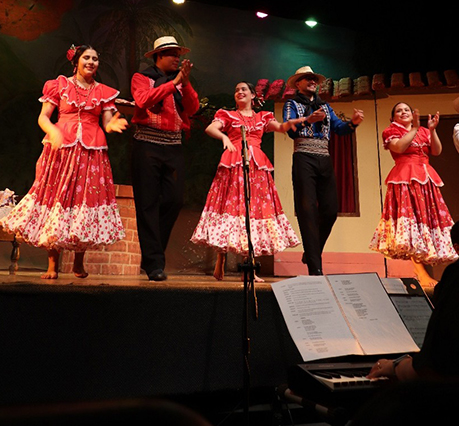Paraguayan Zarzuela “Maria Pacuri”
24 Oct 2025 | Newsletter

The AIPPI Paraguayan chapter members pooled their efforts to sponsor a major cultural event on Wednesday, 17th September, specifically at 8.30 p.m. The event involved over forty national artists from various disciplines, such as lyric-popular singers, stage actors and actresses, a polyphonic choir, and Paraguayan folk dancers, as well as a large number of collaborators who supported this huge undertaking.
The chapter’s president, Víctor Abente Stewart, commented that the event was a stage production of a theatrical and musical work called “María Pacurí”, held at the CCPA Theatre – Teatro de las Américas. The performance was put on by the artistic group called Anástasi Artistic Ensemble, directed by the cultural manager, José Santiago Mazó, who has been working diligently since 2013 to rescue these gems from the past through research, documentary compilation, and stage productions.
The aforementioned work is categorised within the genre of traditionalist theatre known as “Paraguayan Zarzuela”, which originates from the Spanish Zarzuela but with elements adapted to the national reality. It was created in 1956 by the musician Juan Carlos Moreno González and the playwright Manuel Frutos Pane, known as “the golden duo”. Notable titles include “La Tejedora de Ñandutí” (1956), “Corochiré” (1958), “María Pacuri” (1959), “Las Alegres Kygua Vera” (1961), and “Paloma Para” (1963), among others.
The National Secretariat of Culture has declared the Paraguayan Zarzuela genre as a national intangible cultural heritage by Resolution SNC N° 177/17, as it reflects the traditions unique to this geographical area, addressing historical and social themes through theatre, musical pieces with traditional rhythms such as polca and guarania (declared Intangible Cultural Heritage of Humanity by UNESCO in 2024), as well as traditional Paraguayan dances, with a vast repertoire interpreted by a symphonic orchestra. All these “soldiers of the arts” come together to proudly narrate the intimate life of their homeland.
Specifically, the production was led by José Mazó and Mafalda Morínigo as stage directors, Paz Ayala as choreography director, Natalia Funes as music director and Rodolfo González as director of the IMA Municipal Art Institute Choir, under the direction of Luz María Bobadilla and Juan Ángel Monzón.
The play unfolds amidst devilish moustaches, complicit ponchos, and white and yellow flowers, painting the springtime of the Paraguayan countryside during the cotton harvest festival, during the first half of the 20th Century. Sofanor (Koki Delavalle – Actor), a landowner of dubious morals, lives in a common-law relationship with the resigned Luisa (Fátima Báez – Actress), who seeks a glimmer of hope on the horizon. Together they have an almost adolescent daughter, Angélica (Camila Arias – Actress), an expert at seeing through the cracks left by her father.
Luisa, seeking solace and with expectations of redemption, invites the hardworking and beautiful chiperita (chipá seller), María Pacurí (Teresa Jiménez – Soprano), to live in her house to keep her company and to prepare her chipá in a more comfortable place than the small shack where she was living and where her stepfather was exploiting her. Tomasito (Felipe Jara – Tenor) and Tomasita (Amambay Narváez – Soprano) know their master Sofanor’s romantic schedule inside out, but keep quiet for fear of losing their jobs. These steps are closely watched by Father Juan (Matías Miranda – Actor) a priest who incessantly insists on marrying Sofanor to Doña Luisa, and by Antonio (Emiliano González – Actor), a mysterious character who is said to be María Pacurí’s father. Into this small rural world appears Rubén (Gonzalo González – Tenor), a handsome young man from the city who intends to forget old loves with the renewed air of the countryside.
This story, with a marked moralistic tone, shows us the importance of the Catholic church in the construction of Paraguay’s national identity, with elements that highlight the machismo of the era and the interactions between opposing values seeking a hold in a society under construction and looking for a new spirit.
Thus, the Paraguayan Zarzuela provides a clear view of the identity of the heart of South America, far beyond the artistic manifestations it deploys. This is why the aforementioned AIPPI chapter considers support for this type of proposal essential, as there is no greater satisfaction for those whose daily job is to protect their clients’ intellectual rights than to see how these manifestations come to life and become sources of employment and patriotic unity, thereby establishing the importance of disseminating these plays not only from the formality of the intellectual property agent’s role but also as managers and promoters of social and cultural change.